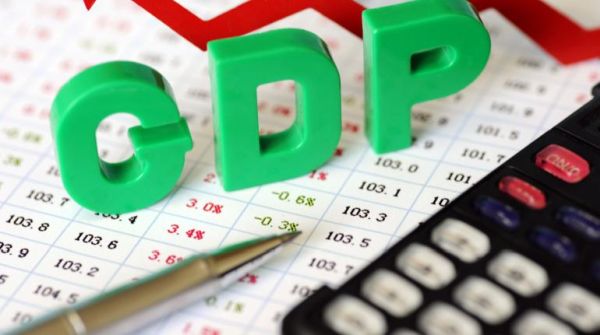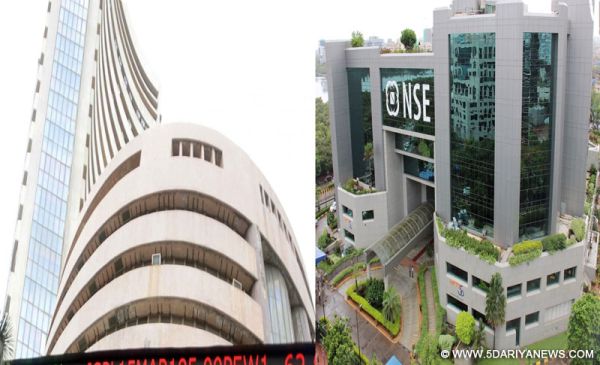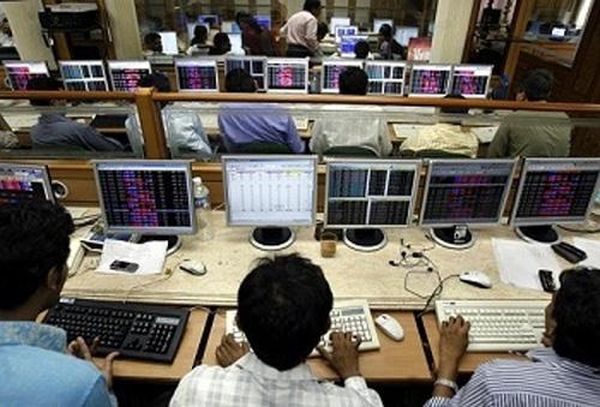
by Editor | May 25, 2021 | Corporate, Corporate Governance, Economy, Finance, Markets, News, Politics
 New Delhi : The government on Tuesday declared its intent to change the base year for calculation of GDP and retail inflation to 2017-18 and 2018 respectively, likely to come to effect by fiscal 2019-20.
New Delhi : The government on Tuesday declared its intent to change the base year for calculation of GDP and retail inflation to 2017-18 and 2018 respectively, likely to come to effect by fiscal 2019-20.
The previous base year revision for gross domestic product (GDP), the index of industrial production (IIP) and the consumer price index (CPI), or retail inflation was revised to 2011-12 and 2012, respectively, Statistics and Programme Implementation Minister Sadananda Gowda told reporters here while briefing about the ministry’s achievments in the last four years.
“The revisions facilitated more accurate assessment of the progress of the economy and the society. Steps are being initiated for the next round of revision also, for GDP we would like to revise the base year to 2017-18 and base year for consumer retail inflation to 2018,” he said.
“These principles are aimed at promoting good practices and professional ethics in production and dissemination of official statistics,” he added.
—IANS

by Editor | May 25, 2021 | Economy, Markets, News
 By Rituraj Baruah,
By Rituraj Baruah,
Mumbai : A healthy rise in the country’s GDP, along with predictions of a normal monsoon and easing crude oil prices fuelled a nearly one per cent rise in the key Indian equity indices during the just concluded trade week.
Accordingly, the two key indices — NSE Nifty50 and the S&P BSE Sensex — ended on a positive note for the second consecutive week.
However, geo-political tensions and resurgent concerns over a trade war between the US and China kept the global markets largely volatile and had a cascading impact on the domestic bourses.
Nonetheless, the barometer 30-scrip Sensitive Index (Sensex) of the BSE rose by 302.39 points or 0.87 per cent to close at 35,227.26 points on a weekly basis.
The wider Nifty50 of the NSE closed the week’s trade at 10,696.20 points — up 91.05 points or 0.86 per cent — from its previous close.
Despite the indices’ northward trajectory, market breadth was negative in four out of the five trading sessions of the week, analysts said.
“Markets ended the week building on with modest gains after a sharp bounce back from the lows of 10,417 towards the end of the previous week,” said Deepak Jasani, Head, Retail Research, HDFC Securities.
“It was thus the second consecutive week of gains for the Nifty after the sharp correction seen recently.”
Hem Securities’ Director Prateek Jain said: “Falling crude oil prices helped equity markets to gather steam in the later part of the week. Development in Italy and Euro zone caused a scare but thankfully it was resolved soon and the market resumed its rally higher.”
According to Jain, on the currency front, easing crude oil prices resulted in appreciation of the rupee.
The rupee strengthened by 72 paise to close at 67.06 against the US dollar from its previous week’s close of 67.78 per greenback.
In terms of investments, provisional figures from the stock exchanges showed that foreign institutional investors sold scrips worth Rs 2,707.41 crore, while the domestic institutional investors purchased stocks worth Rs 2,160.44 crore during the week.
Figures from the National Securities Depository (NSDL) revealed that foreign portfolio investors (FPIs) divested equities worth Rs 2,756.63 crore, or $405.08 million, in the week ended June 1.
Sector-wise, the top gainers were the auto, banking and energy stocks. The top losers were media, IT and realty indices, Jasani said.
The top weekly Sensex gainers were Coal India (up 6.56 per cent at Rs 294.15); Mahindra and Mahindra (up 5.16 per cent at Rs 901.55); HDFC Bank (up 4.87 per cent at Rs 2,109.55); Bajaj Auto (up 4.83 per cent at Rs 2,893.25); and Sun Pharma (up 3.50 per cent at Rs 482.90 per share).
The major losers were Tata Consultancy Services (down 3.48 per cent at Rs 1732.25); Power Grid (down 2.85 per cent at Rs 205.90); Tata Motors (down 2.38 per cent at Rs 287.20); ICICI Bank (down 2.36 per cent at Rs 289.50); and Wipro (down 1.70 per cent at Rs 260.45 per share).
(Rituraj Baruah can be contacted at rituraj.b@ians.in)
—IANS

by Editor | May 25, 2021 | Economy, Markets, News
 Mumbai : The key Indian equity indices surged over one per cent on Thursday over expectations of a higher gross domestic product (GDP) growth rate and predictions of a normal southwest monsoon.
Mumbai : The key Indian equity indices surged over one per cent on Thursday over expectations of a higher gross domestic product (GDP) growth rate and predictions of a normal southwest monsoon.
According to market analysts, lower crude oil prices and healthy buying in banking, oil and gas and finance stocks pushed the key indices higher.
At 3.30 p.m., the wider Nifty50 of the National Stock Exchange (NSE) provisionally closed at 10,736.15 points, up 121.80 points or 1.15 per cent from the previous close of 10,614.35 points.
Similarly, the barometer 30-scrip Sensitive Index (Sensex) of the BSE, which had opened at 35,083.81 points jumped over one per cent by the end of the day’s trade. It closed at 35,322.38 points (3.30 p.m.) — up 416.27 points or 1.19 per cent — from its previous session’s close of 34,906.11 points.
The Sensex touched a high of 35,416.03 points and a low of 34,926.08 points. The BSE market breadth, however, was bearish as 1,657 scrips declined against 996 which advanced.
The major gainers on the BSE were Adani Ports, HDFC Bank, IndusInd Bank, Mahindra and Mahindra (M&M) and Hindustan Unilever, while Sun Pharma, Tata Motors, Hero MotoCorp, Bajaj Auto and Dr Reddy’s Lab were the major losers.
On the NSE, the top gainers were Adani Ports, IndusInd Bank and HDFC Bank, while Sun Pharma, Tata Motors and Titan lost the most.
—IANS

by Editor | May 25, 2021 | Business, Economy, Finance, Large Enterprise, Markets, News, Online Marketing, Technology
 New Delhi : Digital transformation will add close to $154 billion to India’s GDP by 2021 and increase the growth rate by one per cent annually, software giant Microsoft said on Wednesday.
New Delhi : Digital transformation will add close to $154 billion to India’s GDP by 2021 and increase the growth rate by one per cent annually, software giant Microsoft said on Wednesday.
According to a joint report by Microsoft and IDC Asia/Pacifc, in 2017, about four per cent of India’s GDP was derived from digital products and services created directly through the use of digital technologies such as mobility, Cloud, Internet of Things (IoT) and Artificial Intelligence (AI).
“India is clearly on the fast-track towards digital transformation. Within the next four years, it is estimated that nearly 60 per cent of India’s GDP will have a strong connection to the digital transformation trends,” Anant Maheshwari, President, Microsoft India, told reporters here.
“Organisations are increasingly deploying emerging technologies such as AI that will accelerate digital transformation led growth even further,” Maheshwari added.
The survey took into account 1,560 business decision makers in mid and large-sized organisations across 15 economies in the region.
According to the survey, organisations are seeing significant and tangible improvements from their digital transformation efforts across these benefits in the range of 11-14 per cent.
“Business leaders expect to see more than 40 per cent improvements in those key areas by 2020, with the biggest jump expected in productivity, customer advocacy as well as profit margins,” the report said.
Digital transformation has increased productivity, customer advocacy, cost reduction, revenue from new products and services as well as profit margin for the enterprises.
“These benefits will also improve by at least 40 per cent in the next three years, with the biggest jump expected in productivity, customer advocacy as well as profit margin,” the survey noted.
The study indicated that while 90 per cent of organisations in India are in the middle of their digital transformation journey, only 7 per cent in the entire region can be classified as “Leaders”.
“Leaders” are experiencing double the benefits of “Followers” and these improvements will be more pronounced by 2020.
Almost half of “Leaders” (48 per cent) will have a full digital transformation strategy in place.
Emerging technologies such as AI (including cognitive services and robotics) and IoT are areas where “Leaders” are investing in.
Besides these emerging technologies, “Leaders” are also more interested in investing in big data analytics to mine data for actionable insights than others.
“Organisations need to invest in building their ecosystem, from employees, to customers, to partners, across their value chain by gaining new insights through new data sources, and incorporating digitization in their products and services,” said Anil Bhansali, Managing Director, Microsoft India (R&D).
“The pace of digital transformation is accelerating, and IDC expects that by 2021, at least 60 per cent of India’s GDP will be derived from digital products and services,” added Daniel-Zoe Jimenez, Research Director Digital Transformation Practice Lead, IDC Asia/Pacific.
—IANS

by Editor | May 25, 2021 | Opinions
 By Amit Kapoor,
By Amit Kapoor,
Our chief economic advisor very succinctly put it recently that India is both a story of revival and risks. It was further noted that although the level is still below potential, the economy seems to be picking up resiliently in terms of direction.
Now, echoing on similar lines, India has again become the world’s fastest-growing large economy as the latest trends from the CSO data have reported a GDP growth of 7.2 per cent in Q3 of the current fiscal year. No less than an opportunity, this has patently presented all of us with a sense of euphoria while taking our economy to reclaim the “fastest-growing” mantle from China. However, sadly it cannot be for long that one can hold up to all the zest surrounding the Indian economy: Our performance in the global prosperity order is the case in question here.
India has made a ripping progress over the last few decades, with its presence now also being felt at the world level, but when we look at the per capita real GDP figures, the country stands far lower on the economic spectrum compared to the rest of the world: $1,861.5 at 2010 prices for 2016 (World Bank data).
Keeping its economic peers in mind in going by this measure of prosperity, a quintessential question that besets us is why is India where it is today in terms of standard of living for its citizens? Is there a “magic sword” that some countries swing in their favour and maintain decent levels of living standards? Well, differences in GDP per capita across countries have abstracted much of growth and development economics amongst economists which continues even today. However, no less than a magical sword or a master key, the answer lies in looking at the competitiveness of India’s national economy.
Conventional definitions of competitiveness would normally involve discussions about the availability of cheap abundant labour and natural resources, interest rates, exchange rates, the state policies in action and the management practices adopted. But an idea which is single-handedly much more eloquent to the theme of competitiveness is productivity. In its simplest form, productivity is the value of output per unit of input used. National competitiveness, then, is defined as the productivity of the factors of production (labour, land and capital) employed during production processes.
This explanation of productivity being the most meaningful concept of competitiveness is sufficient by itself to demonstrate that there tends to be more broad and complex forces at work than ones that have been traditionally talked about.
Since it is an overriding goal for a nation to produce a high and rising standard of living for its citizens, its ability to be able to deliver on this front depends entirely on the productivity of some of the principal factors of production. Depending on the quality as well as the features of the product, productivity is concerned with the efficiency with which this product is produced.
Being the root cause of national per capita income, productivity, however, must not be mistaken with higher participation of the labour force although it is productivity which determines the rate of return that a factor can earn for itself. This is because it is possible for the overall output to rise even though the per worker per hour productivity goes down. Hence, sustained standards of living and productivity growth require that an economy continually upgrade itself.
An economy that is made up of companies and a set of industry segments must incessantly work towards improving productivity by boosting production efficiency through added quality and features. In the process that is unleashed, capabilities must be developed to compete in more advanced segments as well in entirely newer sections. Because no nation can be productive in everything it does, the ideal is to position the limited pool of resources into uses that are the most productive ones. The search then is for the unwavering quality of a country that can allow its industries and companies to create sustained competitive advantage in selected fields, not only locally but also globally.
Therefore, policymakers seeking to unravel higher levels of living standards must first fully understand the determinants of productivity and its growth. It is incontestably about how and why that underpins the process of achieving and upgrading a nation’s productivity. To find answers to some of the basic caveats, the economy then must not be studied as a whole but in terms of specific defining industries and segments where companies in the modern international competition set-up compete with global strategies involving both trade and foreign investment. This approach has the capability to provide for an understanding why a nation like India can build up a home base for its companies that compete on a global level.
The home base here which is to be built over time is nothing but the nation itself where essential competitive advantages are created and hence sustained.
(Amit Kapoor is chair, Institute for Competitiveness. The views expressed are personal. He can be contacted at amit.kapoor@competitiveness.in and tweets @kautiliya. Bhawna Kakkar, researcher, Institute for Competitiveness, contributed to the article)
—IANS

 New Delhi : The government on Tuesday declared its intent to change the base year for calculation of GDP and retail inflation to 2017-18 and 2018 respectively, likely to come to effect by fiscal 2019-20.
New Delhi : The government on Tuesday declared its intent to change the base year for calculation of GDP and retail inflation to 2017-18 and 2018 respectively, likely to come to effect by fiscal 2019-20.


